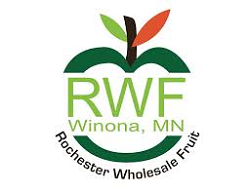It happens to all of us, that first day working in produce retail.
It’s a nervous feeling. Sure, the new employee is excited to be in your produce department. As a manager you’ve already familiarized the clerk with all the basics of clocking in, locker, introductions, schedule, required tools, etc. Then you get into the heart of training.
While many lessons lie before them, consider these five pointers as a training foundation.
- Work neat and clean, and safe. Clerks must be trained in how to be safe, how to lift properly and how to ask for help with the many heavy tasks that are inherent in the produce aisle. Issue the clerk a sharp trim knife and thorough training on how to use this and other tools correctly, as well as how to trim properly and safely. Also, the old message that everyone’s mom dictated years ago applies most of all: Work neatly. Pick up after yourself and help others around you.
- Customer Service is Paramount. Train your clerks’ how to best to speak to customers — how to greet them, how to pay attention to their comments and questions and how helping them is the most important task above all. Because produce clerks are often on the sales floor stocking, they have perhaps the closest encounters with customers than any other store clerks. So, as the face of the company they should be trained to wear a clean apron, a neat appearance and especially have a welcoming persona.
- Product Identification. Nobody learns everything about produce in one day; in fact, it takes a good year of going through all the seasonal changes that clerks get familiar with the hundreds of fresh produce items available. Start with the basics, where to find items in the cooler — and one shift, one day at a time, share details with the clerk such as, “By early October we should fully transition into California navel oranges. This is a favorite high-quality citrus staple, easily in the top 10 of our volume, and is available until late spring.”
- Care and Handling. “Every produce item needs specific, special handling. Not everyone understands this.” This is a message I remember my first produce manager saying. He was right. Produce should always be managed with care. Never dump, drop or otherwise handle anything roughly or it becomes unusable, unsaleable and unprofitable. Produce must be protected by maintaining the cold chain, with frequent water misting, not overstocking or whatever each item requires so that the quality is protected and the bulk of its shelf life benefits the customer.
- Work quality comes first. Clerks want to make a good impression. They see the experienced people around them moving much faster and want to keep up. However, clerks must be reminded that whatever task they do, they should focus on doing the job right first, maintaining high quality standards in all they do. Yes, speed is important in the job, but their training should emphasize that they remain patient. Speed will come with experience. Speed will come later.
There’s lots more to training, of course, but just as a rookie golfer tends to do better by focusing on just a few key pointers, a beginning produce clerk needs to remember a handful of basics as well. Universally, the produce department is known for high job satisfaction, having the fewest sick calls, the fewest on-the-job-injuries and the lowest employee turnover for a reason. And it all starts with that crucial Day 1 training.
I always liked adding this old favorite line in jest: “You don’t have to be a little bit crazy to want to work in produce, but it helps.”














